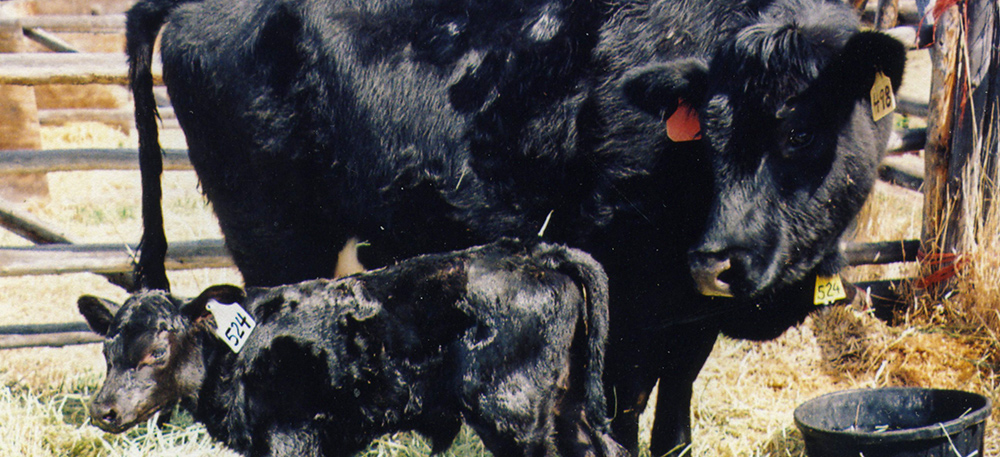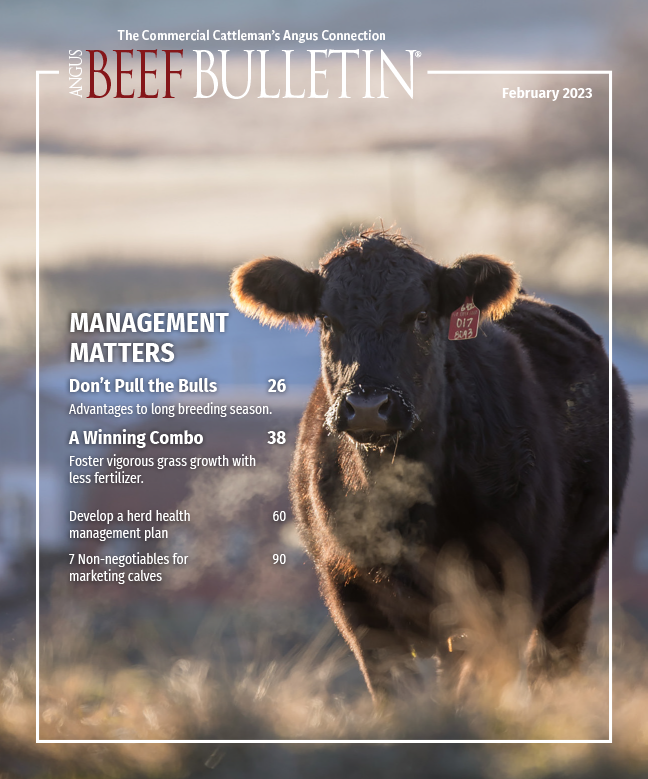
When is the Best Time to Calve?
Factors to consider when deciding on the optimal window for calving season.
Whether a stockman calves in January-February, March-April, May-June or in the fall, often hinges on climate, marketing goals, feed costs or availability, breeding season considerations, management constraints, and other factors. There is no perfect time to calve; each producer must weigh the pros and cons to determine what works best for his or her own situation and goals.
Traditionally, most beef calves have been born in early spring — February through April — to wean in the fall and put on feed through winter. As corn and other feed prices change, however, feedlots differentiate more between lighter and heavier calves — whether they can go straight to feed or to grass first.
With increased hay prices, cow-calf operations look at wintering costs and having to feed hay during early lactation when cow nutritional needs are highest. Climate and how much hay you feed during winter can be major factors, and cold weather necessitates more labor and diligence at calving.
John Campbell, veterinarian at the University of Saskatchewan, says many producers have moved to later calving on pasture rather than in confinement with barns. Calf death loss is generally lower when cows calve later, though many folks who calve early are good at managing for cold weather, and don’t lose calves. Still, it does require more labor.
“One thing we’ve seen with later calving/breeding is slightly lower pregnancy rates, which might be due to poorer pasture quality when they are lactating and being bred,” says Campbell.
Selecting the time for breeding and calving isn’t simple. Many factors go into that decision, he says. “This includes when you want to wean and market calves. If you change calving season, it may impact selling price, as well as market conditions.”
An advantage to calving later in the season, when cows can be out on pasture, is that cows and heifers get more exercise, says Campbell.
“People who calve later tend to report fewer dystocias,” he says. “It might be that they are breeding to easier-calving bulls (because they can’t monitor every birth), or partly because cows get more exercise. I think there is value in having cows moving around more — in better physical shape at calving.”
There are some data regarding bigger birth weights when cows calve early — if winter was cold. In cold weather, when the cow is trying to maintain body heat, more blood is concentrated around internal organs, including the uterus, bringing more nutrients to the fetus when it is growing most rapidly — the last two months of gestation. Also, most of these cows are well-fed to meet increased requirements for maintenance during cold weather. Many factors may work together to make a winter-born calf a little bigger at birth, with a possible increase in calving problems compared to a summer-born calf when cows are out at pasture. Some producers say cows tend to calve easier on green pasture than when confined and fed hay.
Only a few people in northern climates calve in the fall, says Campbell. “Winters are usually too severe to have young calves going into winter, and feed costs are higher for cows at peak lactation that time of year. If a person can keep cows grazing through most of the winter, it’s not as big an issue if they have some kind of supplement; but, it depends on the situation and feed availability.”
Another benefit to calving later is reduced disease pressure.
“Infectious disease in baby calves is minimized when we can spread cattle out on grass,” Campbell explains. “They don’t have to go through a barn or contaminated corral. Most pathogens that cause disease in young calves are carried by the cows.”
These pathogens don’t affect the cows, but they can affect their calves, especially if a calf comes in contact with a lot of fecal material or cows are lying on dirty bedding or manure and the calf suckles a filthy udder. Calving on green pasture reduces death loss and sickness and the need for doctoring calves, saving time and labor and expense for medications.
“There are many reasons for later calving, but if pastures are dry and poor-quality in later summer, it may be harder to meet the cows’ nutritional requirements during breeding season and peak lactation,” says Campbell.
When calving in early summer, a person also needs to decide when to wean those later-born calves. Weaning in the fall may be too early if calves are only 4 or 5 months old, and weaning in January may be too cold. A few producers are leaving calves on the cows through winter and weaning in March, which has some market advantages.
Editor’s note: Heather Smith Thomas is a freelance writer and a cattlewoman from Salmon, Idaho.

